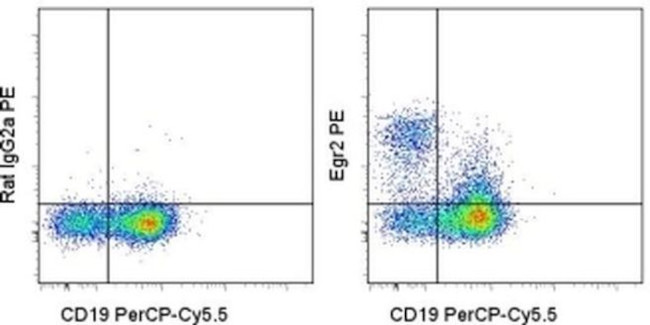Search Thermo Fisher Scientific
Invitrogen
EGR2 Monoclonal Antibody (erongr2), PE, eBioscience™
FIGURE: 1 / 12
EGR2 Antibody (12-6691-82) in Flow

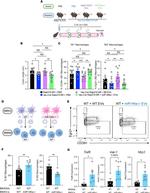
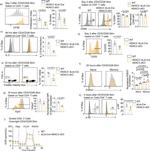
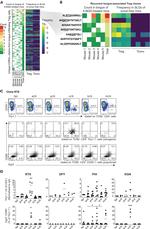
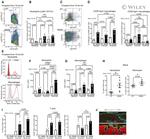
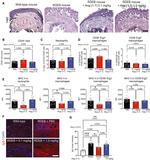
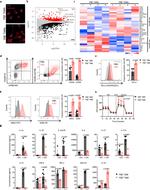
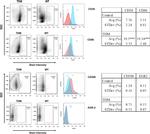

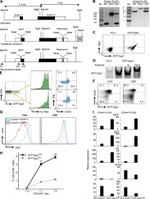
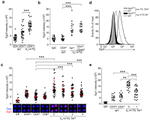
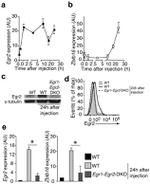
Product Details
12-6691-82
Species Reactivity
Published species
Host/Isotype
Recommended Isotype Control
Class
Type
Clone
Immunogen
Conjugate
Excitation/Emission Max
Form
Concentration
Purification
Storage buffer
Contains
Storage conditions
Shipping conditions
RRID
Product Specific Information
Description: This erongr2 monoclonal antibody recognizes mouse early growth response 2 (Egr2, Krox-20). Egr2 is a zinc finger-containing transcription factor that is important for the development of T cells and NKT cells. Egr2 is predominantly expressed in the thymus and nervous system, and it is also upregulated in T cells following TCR-crosslinking. Upregulation in all non-adherent mouse splenocytes has been observed following stimulation with phorbol 12-myristate 13-acetate (PMA) and ionomycin. Egr2 is believed to antagonize T cell activation and has also been reported to promote apoptosis. The erongr2 antibody also appears to modestly stain a subpopulation of T cells and B cells in freshly isolated spleen cells. The erongr2 monoclonal antibody is specific for Egr2 and does not crossreact to Egr3, based on immunoblot analysis.
Applications Reported: This erongr2 antibody has been reported for use in flow cytometric analysis.
Applications Tested: This erongr2 antibody has been tested by intracellular flow cytometric analysis of stimulated mouse splenocytes using the Foxp3/Transcription Factor Staining Buffer Set (Product # 00-5523-00) and protocol. This can be used at less than or equal to 0.25 µg per test. A test is defined as the amount (µg) of antibody that will stain a cell sample in a final volume of 100 µL. Cell number should be determined empirically but can range from 10^5 to 10^8 cells/test. It is recommended that the antibody be carefully titrated for optimal performance in the assay of interest.
Excitation: 488-561 nm; Emission: 578 nm; Laser: Blue Laser, Green Laser, Yellow-Green Laser.
Filtration: 0.2 µm post-manufacturing filtered.
Target Information
The EGR2 gene provides instructions for making a protein called early growth response 2, which is part of the early growth response family of proteins. These proteins bind to specific areas of DNA and help control the activity of particular genes. On the basis of this action, the proteins are referred to as transcription factors. The early growth response 2 protein activates several genes that are involved in the formation and maintenance of myelin, the fatty substance that covers and protects nerve cells. Myelin promotes the efficient transmission of nerve impulses. If myelin is lost (demyelination) or its structure is disrupted, the transmission of nerve impulses is impaired. Mutations in the EGR2 gene can cause two forms of Charcot-Marie-Tooth disease, type 1D or type 4E (sometimes called congenital hypomyelinating neuropathy) or a severe form of type 1D (sometimes called Dejerine-Sottas syndrome) that begins during infancy or early childhood.
For Research Use Only. Not for use in diagnostic procedures. Not for resale without express authorization.
How to use the Panel Builder
Watch the video to learn how to use the Invitrogen Flow Cytometry Panel Builder to build your next flow cytometry panel in 5 easy steps.
Bioinformatics
Protein Aliases: DKFZp686J1957; E3 SUMO-protein ligase EGR2; E3 SUMO-protein transferase ERG2; Early growth response protein 2; EGR-2; FLJ1454; FLJ14547; Krox-20 homolog; OTTHUMP00000062133; Zinc finger protein Krox-20
Gene Aliases: Egr-2; Egr2; Krox-20; Krox20; NGF1-B; Zfp-25; Zfp-6
UniProt ID: (Mouse) P08152
Entrez Gene ID: (Mouse) 13654

Performance Guarantee
If an Invitrogen™ antibody doesn't perform as described on our website or datasheet,we'll replace the product at no cost to you, or provide you with a credit for a future purchase.*
Learn more
We're here to help
Get expert recommendations for common problems or connect directly with an on staff expert for technical assistance related to applications, equipment and general product use.
Contact tech support
